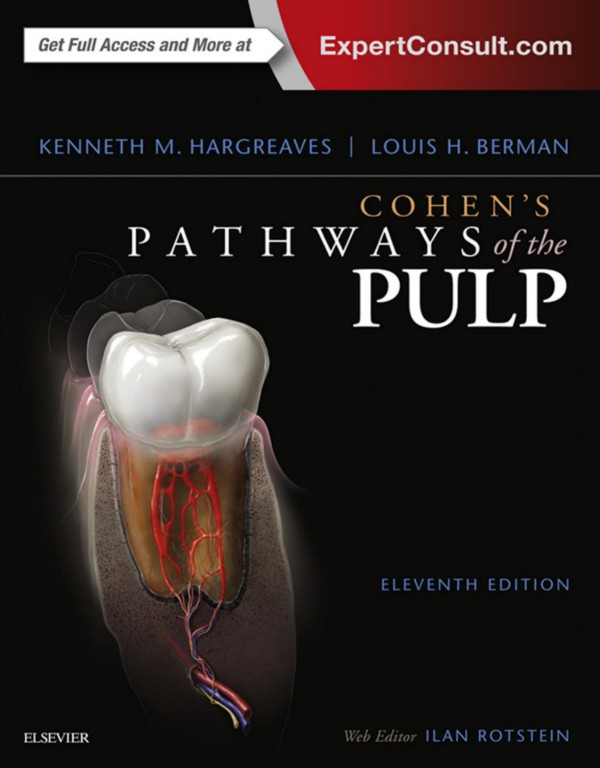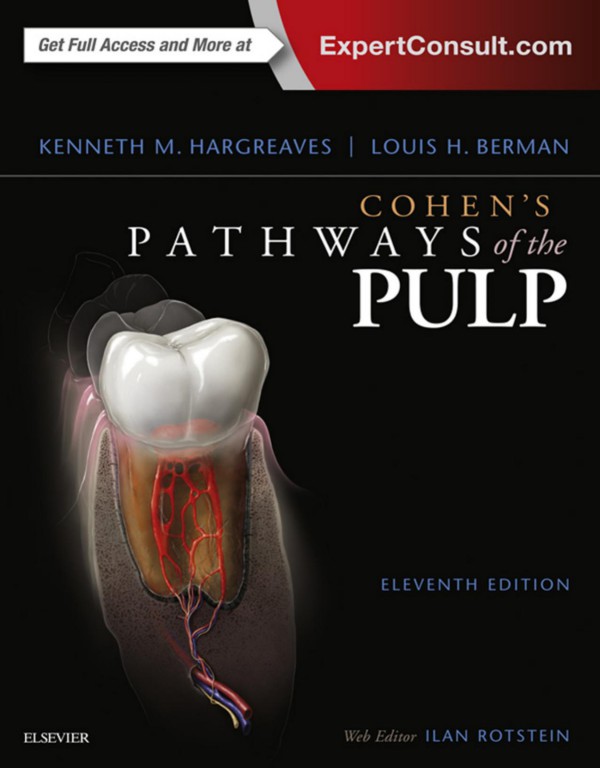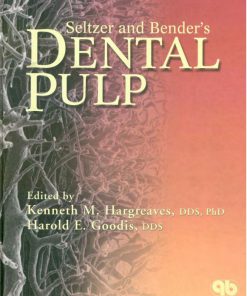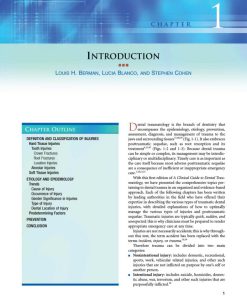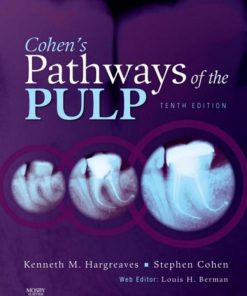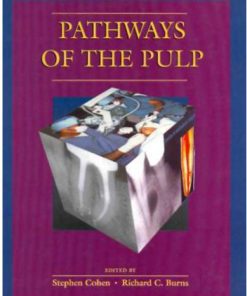Cohen’s Pathways of the Pulp Expert Consult 11th Edition by Louis Berman,Kenneth Hargreaves 9780323185868 032318586X
$50.00 Original price was: $50.00.$25.00Current price is: $25.00.
Authors:Kenneth M. Hargreaves DDS PhD FICD FACD , Series:Dentistry [50] , Tags:Cohen’s Pathways of the Pulp; Eleventh Edition (2016) 1143pp. 978-0-323-09635-5 , Author sort:FACD, Kenneth M. Hargreaves DDS PhD FICD , Ids:9780323096355 , Published:Published:Sep 2015 , Publisher:Elsevier Inc. , Comments:Goodreads; Google; 9780323096355
Cohen’s Pathways of the Pulp Expert Consult 11th Edition by Louis Berman,Kenneth Hargreaves – Ebook PDF Instant Download/Delivery.9780323185868,032318586X
Full download Cohen’s Pathways of the Pulp Expert Consult 11th Edition after payment
Product details:
ISBN 10:032318586X
ISBN 13:9780323185868
Author:Louis Berman,Kenneth Hargreaves
The definitive endodontics reference, Cohen’s Pathways of the Pulp is known for its comprehensive coverage of leading-edge information, materials, and techniques. It examines all aspects of endodontic care, from preparing the clinician and patient for endodontic treatment to the role the endodontist can play in the treatment of traumatic injuries and to the procedures used in the treatment of pediatric and older patients. Not only does Hargreaves and Cohen’s 10th edition add five chapters on hot new topics, it also includes online access! As an Expert Consult title, Cohen’s Pathways of the Pulp lets you search the entire contents of the book on your computer, and includes five online chapters not available in the printed text, plus videos, a searchable image collection, and more. For evidence-based endodontics research and treatment, this is your one-stop resource!
Cohen’s Pathways of the Pulp Expert Consult 11th Table of contents:
I The Core Science of Endodontics
1 Diagnosis
Chapter Outline
Art and Science of Diagnosis
Chief Complaint
Medical History
Dental History
History of Present Dental Problem
Dental History Interview
Examination and Testing
Extraoral Examination
Intraoral Examination
Soft Tissue Examination
Intraoral Swelling
Intraoral Sinus Tracts
Palpation
Percussion
Mobility
Periodontal Examination
Pulp Tests
Thermal
Electric
Laser Doppler Flowmetry
Pulse Oximetry
Special Tests
Bite Test
Test Cavity
Staining and Transillumination
Selective Anesthesia
Radiographic Examination and Interpretation
Intraoral Radiographs
Digital Radiography
Cone-Beam Computerized Tomography
Magnetic Resonance Imaging (MRI)
Cracks and Fractures
Crack Types
Vertical Root Fractures
Perforations
Clinical Classification of Pulpal and Periapical Diseases
Pulpal Disease
Normal Pulp
Pulpitis
Reversible Pulpitis
Irreversible Pulpitis
Symptomatic Irreversible Pulpitis
Asymptomatic Irreversible Pulpitis
Pulp Necrosis
Previously Treated
Previously Initiated Therapy
Apical (Periapical) Disease
Normal Apical Tissues
Periodontitis
Symptomatic Apical Periodontitis
Asymptomatic Apical Periodontitis
Acute Apical Abscess
Chronic Apical Abscess
Referred Pain
Summary
References
2 Radiographic Interpretation
Chapter Outline
Radiographic Interpretation
Imaging Modalities
Image Characteristics and Processing
Digital Imaging and Communications in Medicine (DICOM)
Diagnostic Tasks in Endodontics
Working Length Determination
Diagnosis and Healing
Three-Dimensional Imaging
Principles of Cone Beam Computed Tomography
Voxels and Voxel Sizes
Field of View
Diagnostic Task
Type of Patient
Spatial Resolution Requirements
Imaging Tasks Improved or Simplified by Cone Beam Volumetric Computed Tomography
Differential Diagnosis
Lesions of Endodontic Origin
Lesions of Nonendodontic Origin
Diagnosis of Endodontic Treatment Failures
Vertical Root Fractures
Evaluation of Anatomy and Complex Morphology
Dental Anomalies
Root Canal System Morphology
Intraoperative or Postoperative Assessment of Endodontic Treatment Complications
Materials Extending Beyond the Root Canal
Fractured Instruments
Calcified Canals
Perforations
Dentoalveolar Trauma
Internal and External Root Resorption
Presurgical Visualization
Outcomes Assessment
Implant Site Assessments
Image Perception and Viewing Environment
Future of CBCT
Conclusions
Joint Position Statement of the American Association of Endodontists and the American Academy of Ora
Introduction
Volume Size(S)/Field of View
Dose Considerations
Interpretation
Recommendations
Diagnosis
Rationale:
Initial Treatment
Preoperative:
Intraoperative:
Postoperative:
Rationale:
Non-Surgical Retreatment
Rationale:
Rationale:
Surgical Retreatment
Rationale:
Special Conditions
a. Implant Placement:
b. Traumatic Injuries:
c. Resorptive Defects:
References
Special Committee to Revise the Joint AAE/AAOMR Position Statement on Use of Limited FOV CBCT in End
References
3 Case Selection and Treatment Planning
Chapter Outline
Common Medical Findings That May Influence Endodontic Treatment Planning
Cardiovascular Disease
Diabetes
Pregnancy
Malignancy
Medication-Related Osteonecrosis of the Jaws (MRONJ)
Human Immunodeficiency Virus (HIV) and Acquired Immunodeficiency Syndrome (AIDS)
End-Stage Renal Disease and Dialysis
Prosthetic Implants
Behavioral and Psychiatric Disorders
Psychosocial Evaluation
Development of the Endodontic Treatment Plan
Endodontic Prognosis
Single-Visit versus Multiple-Visit Treatment
Interdisciplinary Treatment Planning
Periodontal Considerations
Surgical Considerations
Restorative and Prosthodontic Considerations
Endodontic Therapy or Dental Implant
Other Factors That May Influence Endodontic Case Selection
Anxiety
Scheduling Considerations
References
4 Pain Control
Chapter Outline
I. Local Anesthesia for Restorative Dentistry and Endodontics
Mechanisms of Action for Anesthetics
Clinically Available Local Anesthetics
Selection of a Local Anesthetic: Possible Adverse Effects, Medical History, and Preoperative Anxiety
Possible Adverse Effects
Cardiovascular Reactions
Systemic Effects
Methemoglobinemia
Peripheral Nerve Paresthesia
Allergic Reactions to Local Anesthetics and Latex
Effects of Systemic Diseases or Conditions on Local Anesthetics
Clinical Anesthesia and Routes of Anesthetic Administration
Important Clinical Factors in Local Anesthesia
Traditional Methods of Confirming Anesthesia
Determining Pulpal Anesthesia in Asymptomatic Vital Teeth
Determining Pulpal Anesthesia in Symptomatic Vital Teeth
Patient Who Has Had Previous Difficulty with Anesthesia
Failure to Achieve Anesthesia in Patients with Pain
Use of Topical Anesthetics
Reversing the Action of Local Anesthetics
Inferior Alveolar Nerve Block for Restorative Dentistry
2% Lidocaine and 1 : 100,000 Epinephrine
Anesthetic Success
Anesthetic Failure
Noncontinuous Anesthesia
Slow Onset
Duration
Alternative Anesthetic Solutions for the Inferior Alveolar Nerve Block
Plain Solutions: 3% Mepivacaine (Carbocaine, Polocaine, Scandonest) and 4% Prilocaine (Citanest Plai
4% Prilocaine with 1 : 200,000 Epinephrine (Citanest Forte) and 2% Mepivacaine with 1 : 20,000 Levon
Articaine with 1 : 100,000 Epinephrine (Septocaine, Articadent, Zorcaine)
Clinical Effectiveness of Articaine for Inferior Alveolar Nerve Blocks
Articaine and Uncorroborated Insurance Carrier Warning
Long-Acting Anesthetics
Buffered Lidocaine
Use of Mannitol
Alternative Injection Sites
Gow-Gates and Vazirani-Akinosi Techniques
Incisive Nerve Block/Infiltration at the Mental Foramen
Lidocaine Infiltrations
Articaine Infiltrations
Attempts to Increase Success of the Inferior Alveolar Nerve Block
Increasing the Volume of Anesthetic
Increasing the Epinephrine Concentration
People also search for Cohen’s Pathways of the Pulp Expert Consult 11th
cohen pathways of the pulp 13th edition pdf
cohen’s pathways of the pulp pdf free download
cohen’s pathways of the pulp expert consult e book
cohen’s pathways of the pulp
cohen pathways of pulp latest edition
You may also like…
eBook PDF
Pathways Of The Pulp 6th edition by Stephen Cohen, Richard Burns ISBN 0801679796 9780801679797

